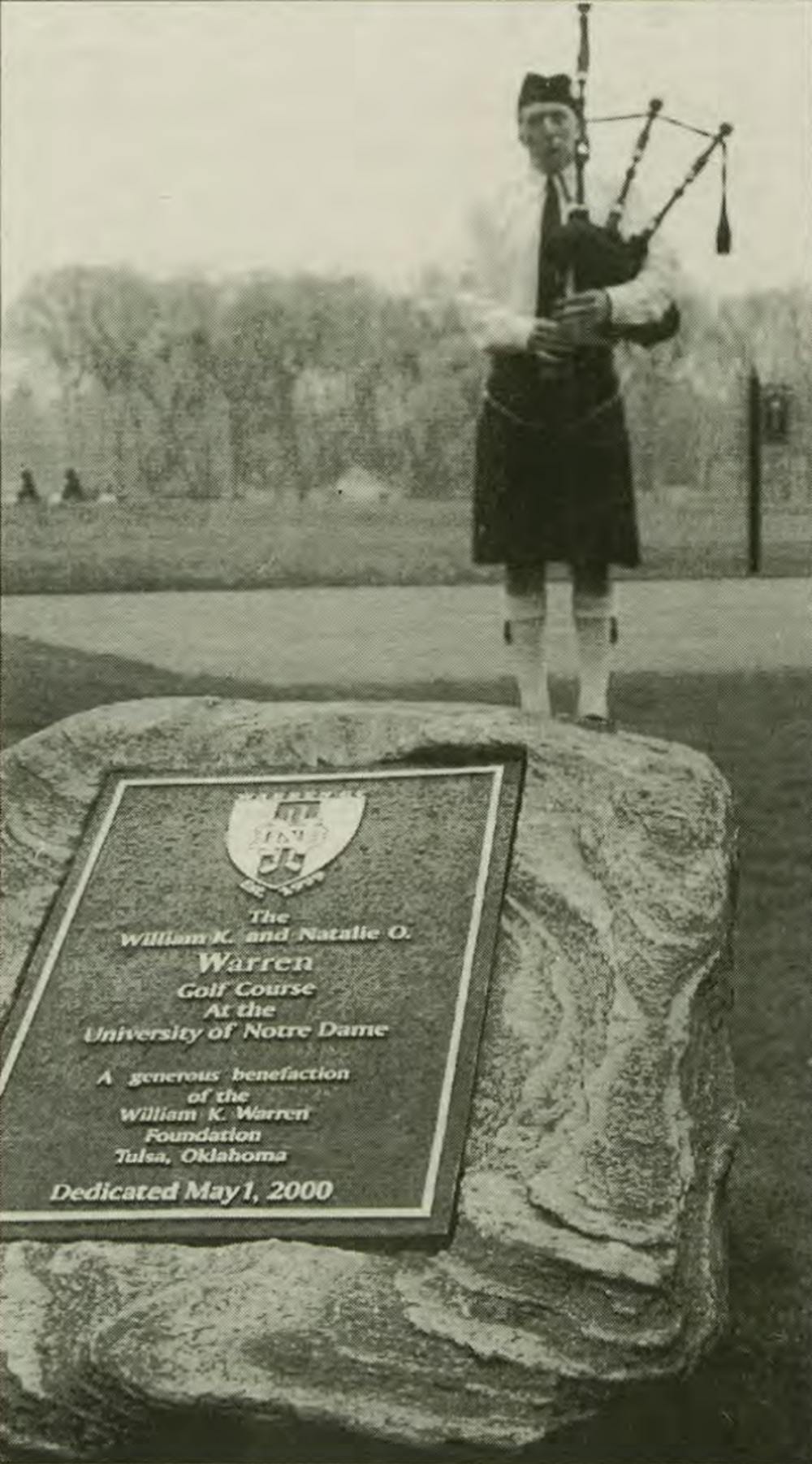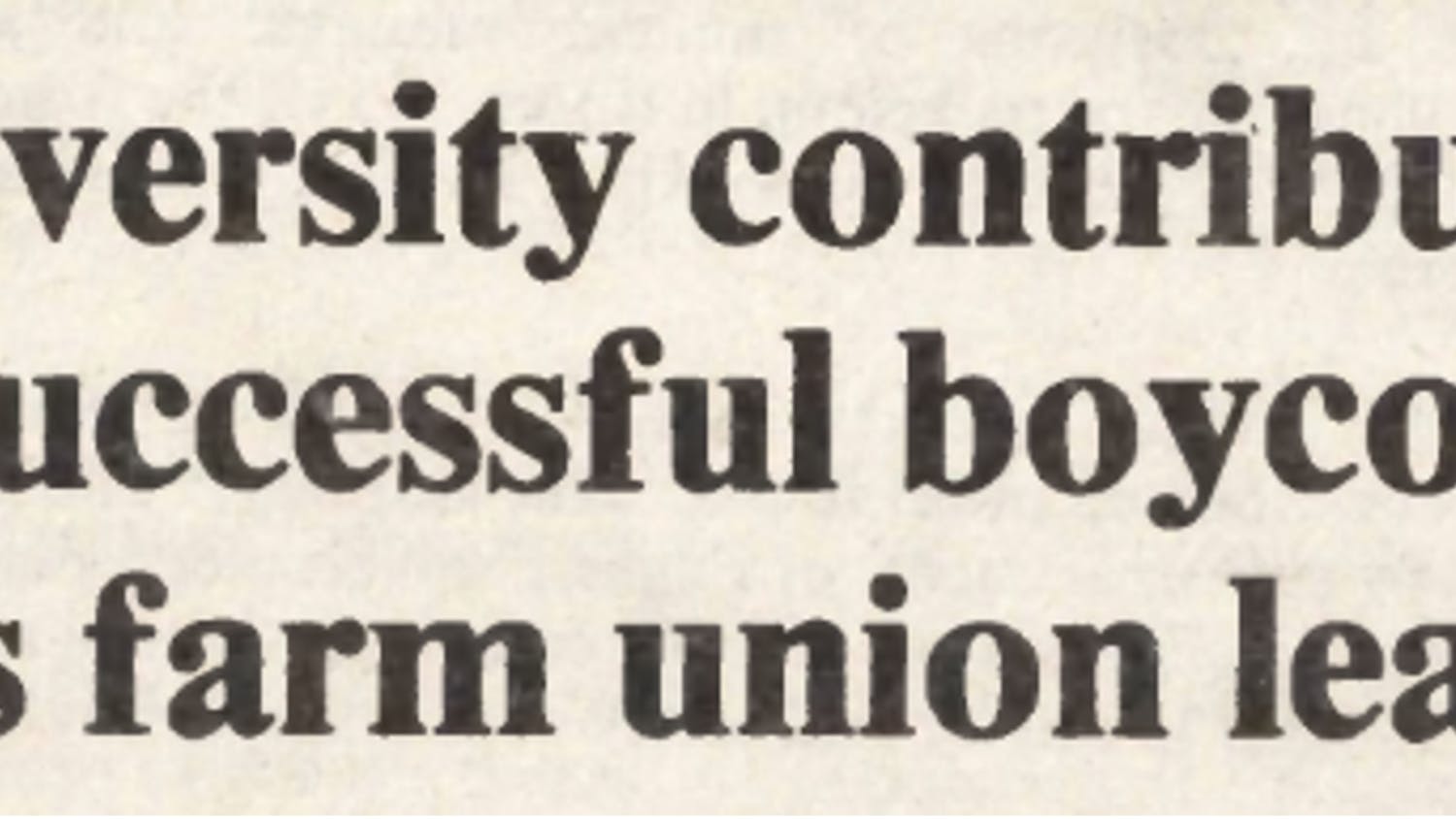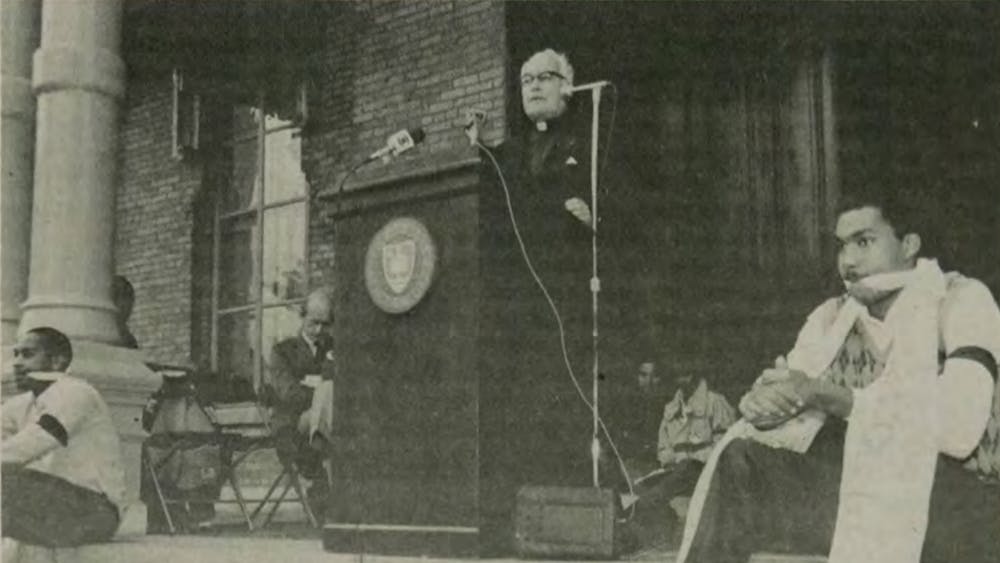
The Emergence of The Burke and Notre Dame’s Golf Fanaticism
Sep. 20, 1929 | Scholastic Magazine Staff | May 19, 2012 | University of Notre Dame Archives | Jan. 16, 2024 | Dennis Brown | Researched by Lilyann Gardner
Nestled in the southwest corner of the University of Notre Dame's campus, the William J. Burke Memorial Golf Course has been a staple of the University's landscape for nearly a hundred years. Affectionately dubbed 'The Burke,' its inception in the late 1920s was a direct response to the burgeoning passion for golf that swept through the student body with the turn of the century. The course stands today not merely as a sporting venue, but as a historical landmark, bearing witness to the timeless enthusiasm for the game among the Fighting Irish.
Preceding its opening, from 1901 to 1910, students could be found playing at a course on the northside of St. Mary’s Lake or on the quad between Badin and Bond Hall. It was only when golf ascended to the status of a varsity minor sport in 1923 that the administration recognized the game's expansive growth, underscoring the need for a dedicated facility.
The growing number of golf enthusiasts were finally granted their wishes for an 18-hole course during the 1929 fall semester after William J. Burke, founder and president of the Vulcan Last Corporation of Portsmouth, Ohio, funded its construction.
According to a Scholastic magazine article from September 20, 1929, the course spanned 6,666 yards with a par of 73 and was placed under the direction of Arthur West, a former employee of Vulcan Golf Company. West oversaw operation and taught fundamentals of the sports to faculty and students during the winter months when adverse conditions prohibited play.
Love of the game and of The Burke persisted over the years and did not waver even as the course underwent alterations. In 1939, the course underwent its inaugural transformation, truncated to make way for the construction of the Rockne Memorial. This pattern of adaptation was echoed in the 1950s with the creation of Pangborn and Fisher Halls. For nearly half a century thereafter, the contours of the course remained unchanged. However, a significant reconfiguration emerged in 1995, when the expansive 18-hole course was reimagined into a more concise nine-hole layout.
The decision to reimagine The Burke marked a turning point, setting the stage for a new chapter in Notre Dame's golfing legacy as the 21st century beckoned with fresh possibilities.
Burke Memorial Golf Course — A Ground of Many Trades
Feb. 8, 1984 | Observer Staff | Sept. 21, 2000 | Observer Staff | Jan. 23, 1986 | Observer Staff | Nov. 22, 1994 | Observer Staff | Nov. 4, 1994 | Observer Staff | Researched by Thomas Dobbs
In the ever-evolving landscape of Notre Dame, few locales have served a medley of purposes quite like the Burke Memorial Golf Course. The archives reveal a collection of events that showcase the site's adaptability and the University community's creativity in reimagining this green space.
In 1984, when the chill of winter crept over the campus, the golf course donned a new identity, transforming into a cross-country skiing destination. Moonlighters skied the rolling hillocks, a testament to the enduring spirit of Notre Dame's students who, undeterred by the frost, found warmth in the thrills of twilight skiing.
By 1986, the course became a nurturing ground for the budding ski enthusiast with the NVA cross-country ski clinic. It was not just a space for competition or leisure, but also for learning and growth, embodying the University's commitment to fostering new skills within its community.
The year 1994 witnessed a less buoyant but equally pivotal moment — a theft of flagpoles and flags, as reported by a diligent University employee. This incident, though a blip in the grand narrative, speaks to the course's role in the daily ebb and flow of campus life, a silent witness to both triumphs and tribulations.
In a more lighthearted twist, 1994 also brought an impromptu addition to the golf course's array of activities. An unplanned landing by a hot air balloon provided a momentary spectacle, briefly turning the fairways into a landing strip. This surprise touchdown served as a reminder of the golf course's role as an unwitting stage for the unexpected, punctuating the usual pace of University life with a touch of the extraordinary.
Flipping through the Observer archives, one notes how the course has been a common thread in the fabric of Notre Dame's story. It's a place where the echoes of footfalls on cross-country meet days blend with the silent glide of skis, where the bustle of students converges with the hushed strategy of golf. Through skiing adventures, unexpected landings, and even the occasional grand larceny, the Burke Memorial Golf Course has proven its worth despite being reconfigured to accommodate two new dorms.
The Burke Yields to Warren
Oct. 4, 1994 | Sarah Doran |Aug. 8, 1999 | Observer Staff |May 2, 2000 | Observer Op-Ed | Jan. 16, 2024 | Dennis Brown| Researched by Cade Czarnecki
The Burke Golf Course, with all its changes, stood as the primary course for both competitive and casual golf at Notre Dame until 1995. As has defined much of Notre Dame’s history, new construction upset the status quo. Four new dorms were constructed at that time in the late 1990s, upsetting the existing continuous 18 holes of the Burke.
The 1995 remodel of the Burke halved the traditional 18 holes, leaving it only with nine holes playing at 3,220 yards and a par of 35. In exchange for the sacrifice of the 9 holes, Notre Dame acquired enough land to build O’Neill, Keough, McGlinn, and Welsh Family Hall on the southwest side of campus.
Notre Dame golfers that were disheartened by the shrinking of the Burke Course would soon be elated to learn that a $7 million gift by Alumnus William Warren, Jr. of Tulsa, Oklahoma (Notre Dame class of 1956) helped make a brand new, 18-hole, 6,744 yard course possible on the other side of campus.
Warren’s passion for golf was longstanding, evidenced by the fact that he held membership at the Augusta National Golf Club—the location of the iconic Master’s Tournament—in Augusta, Georgia and at Southern Hills Golf Club—home to multiple U.S. Open Championships as well as several PGA Championships—in Tulsa, Oklahoma.
While initial plans slated the opening of Warren Golf Course to be in 1999, a mix of extreme rainfall and periods of drought throughout the spring and summer of 1999 forced the official opening to be pushed back until spring of 2000, although some play did occur in 1999.
Since then, Warren Golf Course has been home to numerous NCAA and USGA sanctioned events, a tribute to its top-class features.
For an interesting read on the background the Burke Golf Course outside of the pages of The Observer, please check out this terrific article by Dennis Brown.










